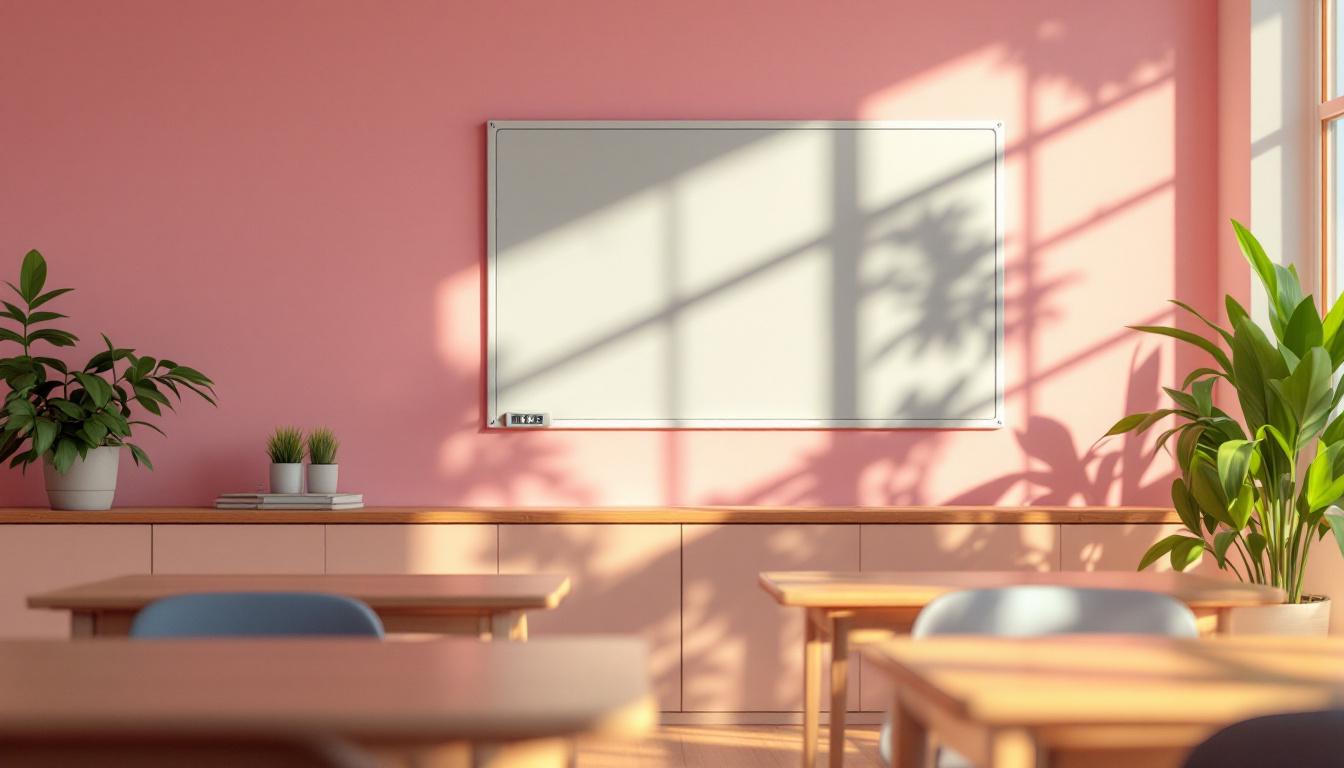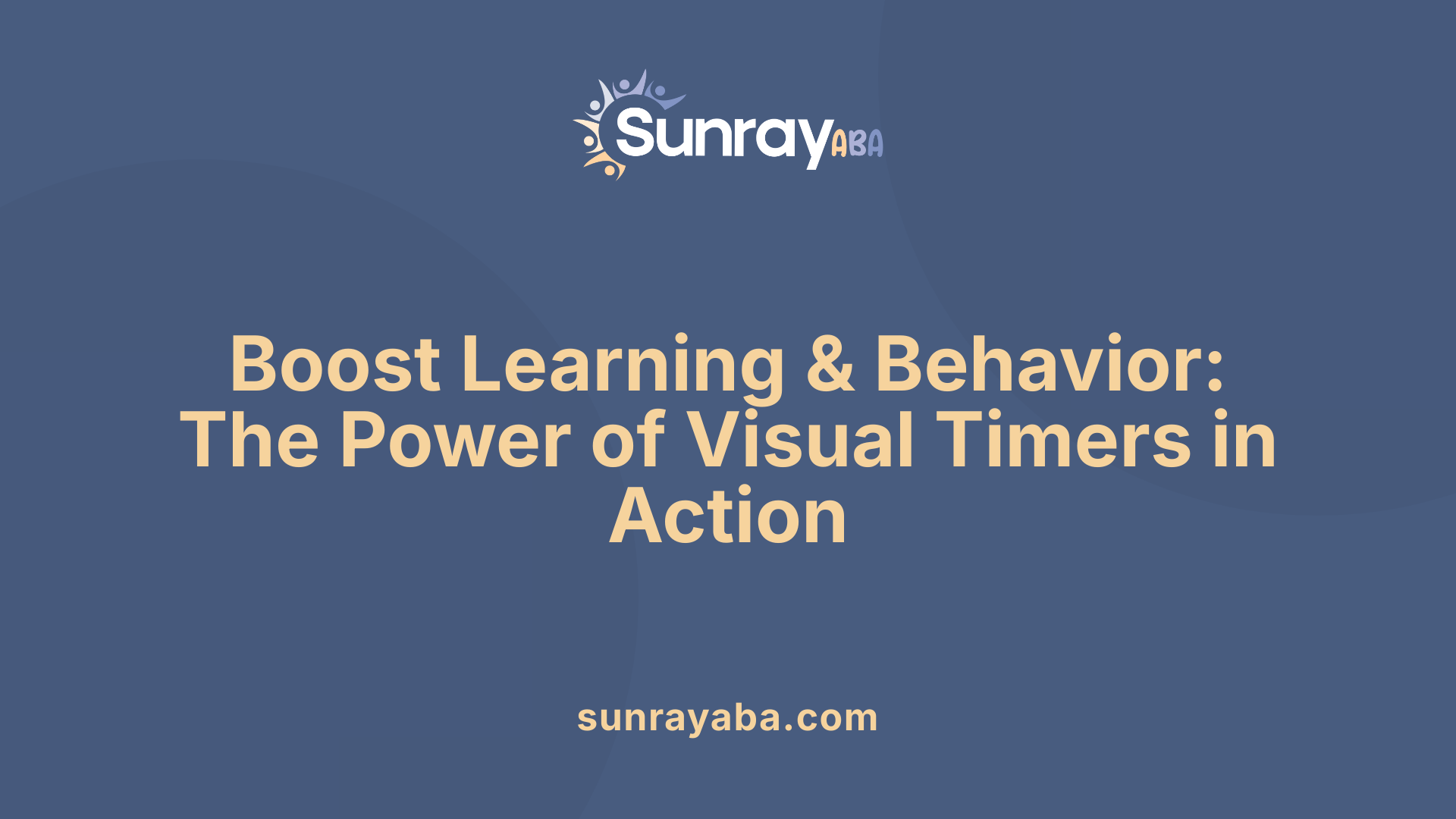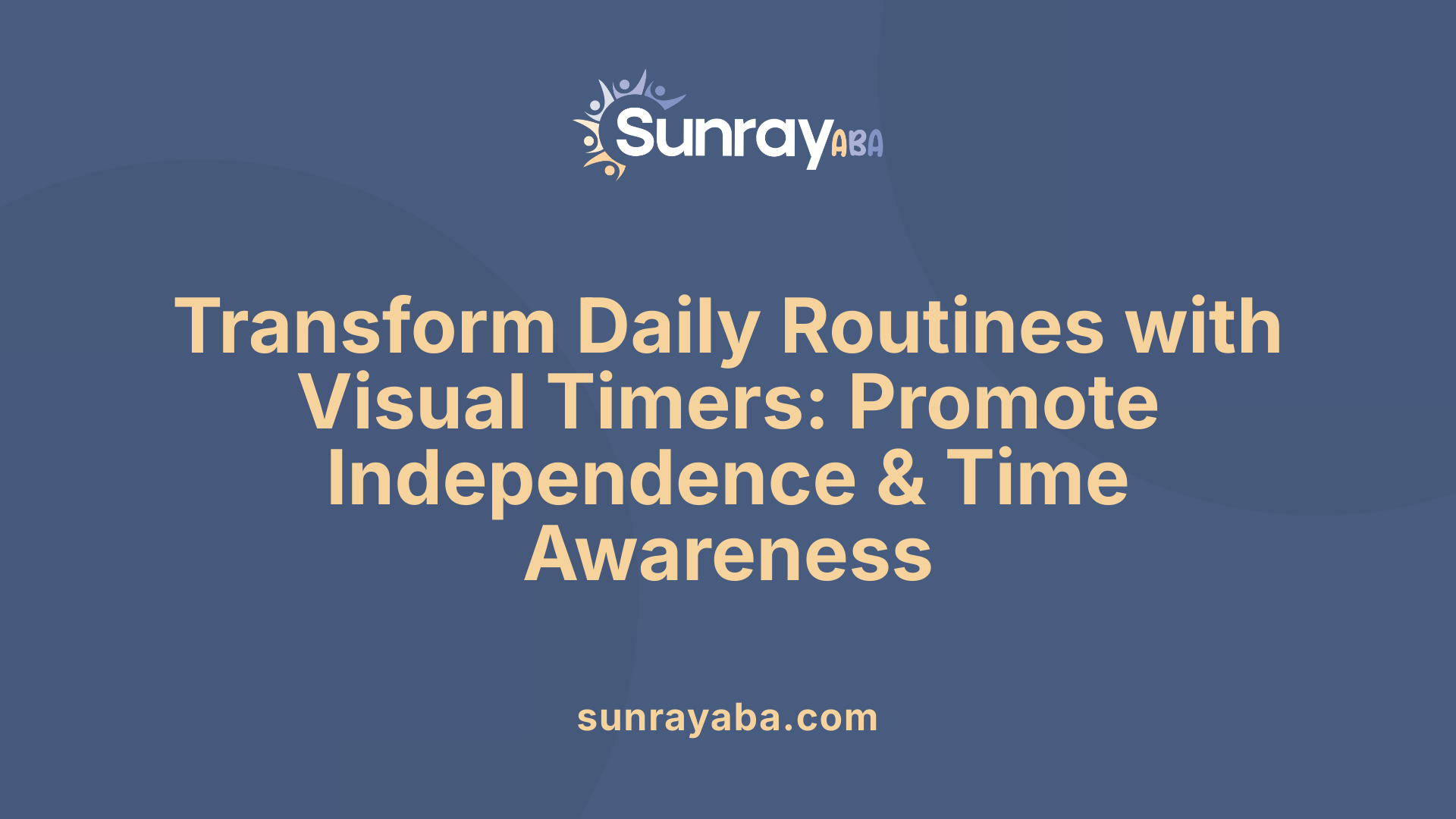How Visual Timers Support Time Management Skills

Unlocking the Power of Visual Timers in Daily Life
Visual timers are innovative tools that use visual displays to depict the passage of time, offering significant benefits across educational, developmental, and personal contexts. By providing concrete visual cues, these timers help individuals manage time effectively, reduce anxiety, and develop essential skills like self-regulation, attention, and transition management. This article explores how visual timers support and improve time management skills, highlighting their types, functions, applications, and strategies for effective implementation.
Understanding Visual Timers and Their Functions
What types of visual timers are available, and how do they differ?
Visual timers come in several formats, including digital timers, physical timers like hourglasses, app-based timers, and specialized devices such as sand timers or sensory timers. Digital timers often feature countdown displays with numbers or colored bars, while physical timers like hourglasses and sand timers provide a tactile and visual experience of time passing. The Time Timer app and similar applications offer customizable features like multiple timers, colors, and sounds.
Each type serves different needs, preferences, and environments. For example, digital timers are easy to set and read, suitable for classrooms and workplaces. Sand timers are simple and tangible, ideal for young children or those with sensory needs. App-based timers afford high customization, useful for both personal and professional settings.
How do visual timers display the passage of time?
Visual timers portray time passage through various visual cues. Common methods include:
- Disappearing colored disks (like in the Time Timer) that diminish as time elapses.
- Countdown bars or progress lines that move or change color.
- Symbols or pictures that reveal or fade over time.
- Color-coded sections that shrink or expand.
These visual displays help users perceive how much time remains at a glance, which is especially helpful for children and individuals with neurodiverse conditions.
In which settings are visual timers most commonly applied?
Visual timers are versatile and used across a range of contexts:
- Educational settings: To help students manage time during tests, reading, or assignments, and facilitate transitions.
- Therapy sessions: To support behavioral regulation and skill development, particularly for children with autism or ADHD.
- Home environments: For routines like brushing teeth, cleaning up, or homework management.
- Workplaces: To improve focus, time tracking, and break management.
- Personal development: During meditation, exercise, or other mindfulness activities.
Their adaptability makes them vital tools for promoting routine, enhancing independence, and fostering better time awareness.
Effective Strategies for Using Visual Timers

Choosing appropriate timers based on individual needs and sensory preferences
Select a timer that suits the user’s sensory preferences and specific needs. For example, some individuals benefit from high-contrast visual displays like the Time Timer, which features a disappearing colored disk. Others may prefer physical sand timers or digital apps with customizable features. Consider whether the user has visual or hearing impairments, and opt for timers that accommodate those needs, such as timers with contrasting colors, sound alerts, or both.
Consistent use across various tasks and settings
Consistency in using visual timers helps build familiarity and reliability. Applying timers during different activities—homework, chores, or transitions—reinforces their usefulness. When children or individuals with special needs see timers as a routine part of their day, it reduces anxiety and supports smoother transitions. Using the same type of timer across settings like school and home fosters a sense of stability.
Clear instructions and explanations for timer use
Introduce timers with straightforward guidance. Clearly explain how to start, pause, and interpret the visual cues. For example, show how the disappearing disk signals the end of a task. Reinforce understanding through modeling and positive reinforcement. This clarity helps users develop confidence in managing their time independently.
Incorporating timers into routines and transition signals
Use timers as part of daily routines and transition cues. For example, set a timer to signal when it’s time to clean up or switch activities. Consistently using timers during these moments aids children and adults in managing expectations, reducing resistance or anxiety during transitions, and promoting independence.
Regular evaluation and adjustment of timer settings
Monitor how well the timers are supporting the individual’s needs. Adjust durations based on progress and comfort levels. For example, increase allotted time as skills improve or shorten it to gradually challenge the user. Regular review ensures the timers remain effective and adaptable, fostering better time management skills over time.
Impact of Visual Timers on Learning and Behavior

Enhancement of focus during tasks and transitions
Visual timers are powerful tools that improve focus by providing clear visual cues of time passing. For example, the Time Timer displays a disappearing red disk to visually indicate how much time remains, helping users stay attentive without constantly watching a clock. They are especially useful during transitions, signaling to children and adults alike when to switch activities smoothly. These visual aids reduce the need for frequent reminders, allowing individuals to manage their attention more effectively.
Reduction in anxiety and behavior disruptions
Using visual timers can significantly decrease stress and disruptive behaviors, particularly for those with attention issues like ADHD, autism, or sensory processing differences. The visual representation helps make abstract time concepts concrete, offering reassurance through predictable routines. For children with autism, seeing time pass and understanding when an activity ends eases stressful transitions, fostering calmness and cooperation.
Promotion of independence and self-regulation
Timers support children and adults in developing self-management skills. By visually tracking how long they work on a task, users learn to pace themselves and finish activities on time. Visual timers also encourage independence, as individuals can manage routines like homework, chores, or self-care routines with minimal adult prompting. Over time, this builds confidence in managing daily activities.
Development of a concrete understanding of time concepts
Visual timers help users grasp fundamental time concepts, such as estimating durations and planning ahead. For young children, visual cues turn the concept of time into a tangible experience, aiding in early learning. For older learners or those with special needs, these tools reinforce skills in anticipating task lengths, enhancing overall time management and productivity. Their visual nature makes the passage of time easier to understand and incorporate into daily routines.
| Timer Type | Best For | Notable Features | Example Use Cases |
|--------------|------------|------------------|---------------------|
| Digital / App | Tech-savvy users | Customizable, alarms, sync across devices | Classroom timers, study sessions |
| Physical timers | Visual learners, children | Disappearing disks, colorful visuals | Managing chores or homework |
| Sand timers | Quick timing, sensory input | Tactile experience, simple to use | Breaks, short tasks |
| Visual schedules | Routine management | Pictorial and sequential | Daily routines, autism support |
In summary, visual timers are versatile tools that nurture focus, reduce anxiety, foster independence, and deepen understanding of time — essential skills for both children and adults in many settings.
The Broader Benefits of Visual Timers in Daily Life

Promotion of routines like brushing teeth or cleaning up
Visual timers are excellent tools for establishing and maintaining daily routines. For instance, parents can use timers to signal when it’s time to start brushing teeth or tidy up. The visual cue, often a diminishing color or a moving indicator, helps children understand how much time they have left, promoting independence and accountability.
Use in managing screen time and daily schedules
In managing screen time, visual timers provide clear signals about when to stop, reducing conflicts and helping children develop self-regulation skills. These timers can also be integrated into daily schedules, offering visual representations of upcoming activities. For example, a schedule with pictures and timers shows what’s next and how long each activity lasts, easing transitions and reducing anxiety.
Supporting early learners in pacing and planning
For young children learning to pace themselves, visual timers are invaluable. They help children grasp the concept of time by visually demonstrating how long tasks like playing, reading, or homework should take. This tangible understanding promotes better planning skills, allowing early learners to develop a sense of timing and improve their ability to manage activities independently.
Employing visual timers in everyday routines nurtures essential executive functioning skills such as organization, self-regulation, and time awareness. Whether used at home or school, these simple tools support children and adults in creating predictable, structured environments that foster confidence and productivity.
Research and Evidence Supporting Visual Timers

Studies Indicating Improvements in Self-Regulation, Focus, and Independence
Research shows that visual timers can significantly boost self-regulation skills, especially in young children. These tools allow users to see the passage of time, reducing anxiety and helping them manage transitions between activities. Students and children with attention challenges such as ADHD or autism often demonstrate better concentration and independence when using visual timers. By providing a clear visual cue, these timers help break down tasks into manageable segments, fostering a sense of control and reducing impulsivity.
Florida Atlantic University Findings on Young Children
A study by Florida Atlantic University found that children aged 2-4 exhibited increased self-regulation skills when using the Time Timer. This research highlights the benefits early exposure to visual time management tools have on developing skills necessary for future academic and personal settings. The visual cues help young children understand the concept of passing time, which is often abstract for this age group, promoting better attention spans and task completion.
Expert Recommendations for Use in Educational and Therapeutic Settings
Experts widely recommend incorporating visual timers into classrooms and therapy sessions. They are considered effective for teaching children and adults to develop reliable internal clocks, improve focus, and manage routines efficiently. Teachers and therapists use timers not only to aid in task completion but also to support transitions and reduce wasted time. The visual and auditory cues offered by timers enhance engagement and make the concept of time more tangible, especially for children with special needs.
| Benefit | Description | Suggested Use Cases |
|---|---|---|
| Self-regulation | Builds ability to control impulses and emotions | In classrooms, therapy, home routines |
| Focus | Improves attention span during tasks | During homework, work projects |
| Independence | Promotes self-management of routines | Managing transitions, breaks |
| Stress Reduction | Decreases anxiety with visual cues | Before exams, during therapy |
Utilizing visual timers supported by research can profoundly impact individual growth in executive functioning, making routines clearer, smarter, and less stressful.
Implementing Visual Timers for Optimal Results

Choosing timers suited to specific needs
Selecting the right visual timer depends on individual preferences and tasks. For instance, the Time Timer with its red disk is ideal for visual thinkers and children, providing a clear depiction of remaining time through visual cues. Digital timers and apps offer customizable settings and alarms, supporting versatility across settings like classrooms and workplaces. Physical timers such as hourglasses and sand timers are simple and effective for younger children or those who prefer tactile tools.
Clear communication of timer purpose and expectations
It’s important to explain how and why timers are used. Clearly stating the expected duration and what it signifies helps set boundaries and reduces anxiety. Teachers and caregivers should also demonstrate how to interpret visual cues, ensuring users understand what the visual changes mean—such as a shrinking red disk or fading colors—so they feel in control.
Reinforcement and positive feedback
Using timers becomes more effective when paired with positive reinforcement. Praising efforts or giving rewards for completing tasks within the set time encourages continued use and motivation. Consistent praise reassures individuals that managing time well leads to success, helping to foster independence and confidence.
Flexibility and customization in timer use
Adapting timers to suit individual needs is crucial. Many digital apps allow customization of sounds, colors, and alarms, accommodating sensory sensitivities. Flexibility in setting durations, creating recurring timers, or adjusting visual elements supports varied routines and learning styles. Teachers and parents should be open to experimenting with different timer types and features to find what works best for each user.
Harnessing the Power of Visual Timers for Better Time Management
Visual timers are powerful tools that foster better time awareness, reduce stress, and promote independence across various settings. They are versatile, customizable, and easy to integrate into daily routines, making them invaluable for individuals of all ages, especially those with neurodiverse conditions. By understanding the different types, applications, and strategies for effective use, educators, parents, and individuals can harness the benefits of visual timers to enhance productivity, emotional regulation, and overall well-being.
References
- The Power Of Visual Timers: A Game-Changer - Life Skills Advocate
- Time Management For All Abilities | Visual Timer
- Timers | Learner Variability Project
- 15 Ways to Use Timers to Streamline Your Classroom Management
- [PDF] Visual Supports: Visual Timers
- What is time timer visual timer? – Focuskeeper Glossary
- Visual Timers for Kids: Help with Time Management & Transitions
- Five Ways the Time Timer App Can Boost Productivity